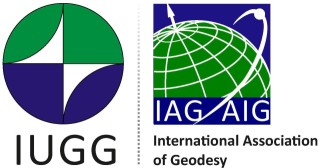Over the whole timescale of geophysical processes, the Earth rheological behaviours are extremely diverse. It is well known that the Earth mantle rheology ranges from mostly elastic with slight anelastic dissipation in the seismic frequency band, to viscoelastic at the Glacial Isostatic Adjustment (GIA) timescale. Even so, at intermediate frequencies, observations of the Earth deformations are sparse, preventing a complete understanding of the Earth rheology. In this work, we thus focus on two kind of processes at intermediate time scales, namely the deformations due to loading at the Earth surface and the Chandler wobble. Both are dependent on the mantle rheology and their study might help filling the gap in our understanding of the mantle behaviour at intermediate frequencies.
We first deal with the computation of the Love numbers and the gravity-to-height changes ratio for a surface loading on an homogeneous Earth model with different mantle rheologies. We investigate the frequency dependency of the induced deformation and the influence of elastic and viscosity parameters, considering both the amplitude and phase of the gravity-to-height changes ratio. We obtain a continuous transition between the short-term and the long-term fluid regime, with the viscosity of the mantle being decisive in the timescales at which this change occurs although it does not affect the extent of the viscoelastic domain. Then we similarly study the influence of the rheological parameters on the Chandler wobble period and quality factor for a Burgers rheological model, showing that for viscosities values commonly found in the literature, the quality factor mostly depends on the Kelvin viscosity and is more sensitive than the period to this parameter. As a conclusion, we will briefly show how these results may be related to geophysical observations to put additional constraints on the Earth mantle rheology.
|
|
|
|
Influence of the Earth mantle rheology on the Chandler wobble period and quality factor and on the gravity-to-height changes ratio under surface loading at intermediate timescales
1 : Observatoire de Paris
(OBSPM)
-
Website
PSL Research University, CNRS : UMR8630, Sorbonne Universités, Université Pierre et Marie Curie (UPMC) - Paris VI, Laboratoire national de métrologie et d'essais (LNE), PSL Research University, Sorbonne Universités
SYRTE - Observatoire de Paris 61, avenue de l'Observatoire 75014 Paris -
France
2 : École et Observatoire des Sciences de la Terre
(EOST)
-
Website
Université de Strasbourg, université de Strasbourg
5 Rue René Descartes 67084 STRASBOURG CEDEX -
France
3 : Institut de physique du globe de Strasbourg
(IPGS)
-
Website
université de Strasbourg : UMS7516
5 Rue René Descartes 67084 STRASBOURG CEDEX -
France
4 : Institut de Physique du Globe de Strasbourg
(IPGS - EOST)
-
Website
* : Corresponding author
université de Strasbourg, INSU, CNRS : UMR7516
5 Rue René Descartes 67084 STRASBOURG CEDEX -
France
|

 PDF version
PDF version
